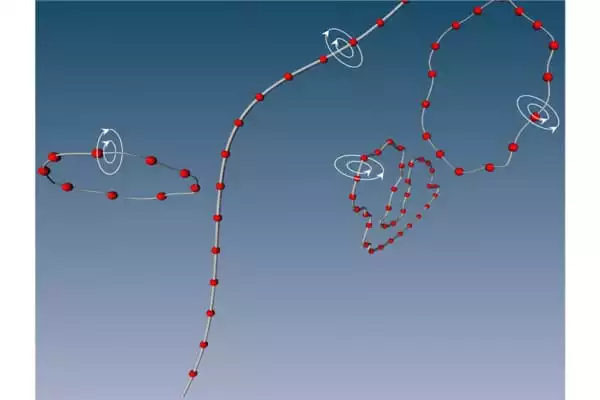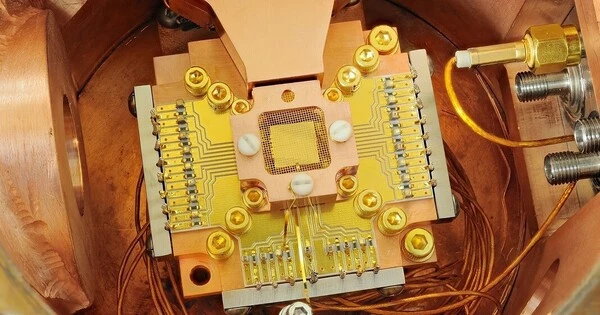Researchers discovered that silicon nanoparticles are drawn to vortices in superfluid helium. Their simulations enabled them to visualize the vortex line recombination process. The research could lead to advancements in quantum computing and optical spectroscopy.
Researchers at Osaka Metropolitan University and Osaka University used numerical simulations to confirm observations of quantized vortices in superfluid helium using silicon nanoparticles, improving understanding of quantum fluids and superconductors.
Consider converting matter to light and light to matter, and then using that technology to create computers that are faster and more powerful than anything most of us can imagine. A new discovery could link electronics and photonics, bringing that dream closer to reality. Physicists have successfully engineered a spiral laser beam capable of creating a vortex, or quantum whirlpool, of particles known as polaritons, which are hybrid particles with both matter and light properties. Polaritons form in semiconductors when laser light interacts with electrons and holes (positively charged vacancies) so strongly that it is no longer possible to distinguish light from matter.
Research team has now used silicon nanoparticles to help visualize the properties of superfluid helium, similar to skipping stones across a river to help visualize the flow of water. These are tiny, discrete whirlpools with a fixed amount of angular momentum. The nanoparticle “stones” were used to study the process of vortex reconnection, in which lines of vortices coalesce and exchange parts.
Researchers used laser ablation to blast silicon nanoparticles at the vortices that form in superfluid helium. After observing the patterns of light scattering off the silicon nanoparticles, scientists from Osaka Metropolitan University ran a massive simulation of quantum vortex dynamics, which confirmed that the observed nanoparticle swirls and loops were caused by quantum vortices. Because of the strong interaction between light and silicon nanoparticles, this work opens up new possibilities in optical research for other quantum properties of superfluid helium, such as the optical manipulation of quantized vortices.
The rules of quantum mechanics may appear strange at first; particles can behave like waves and waves can behave like particles. Strange quantum behavior is typically found on a very small scale. When certain materials, such as helium-4, are cooled to extremely low temperatures, the “waviness” of the particles has effects visible even at macroscopic scales.

“Supercooled” helium is an example of a Bose-Einstein condensation, in which atom-representing waves overlap until the entire fluid behaves like a single massive particle. Because the transition to a superfluid in helium-4 occurs at relatively low temperatures, this process has no classical analogue and is a useful system for testing quantum mechanics theories.
A research team has now used silicon nanoparticles to help visualize the properties of superfluid helium, similar to skipping stones across a river to help visualize the flow of water. One of the unique properties of superfluid helium is that any rotational motion can only take the form of quantized vortices. These are tiny, discrete whirlpools with a fixed amount of angular momentum. The nanoparticle “stones” were used to study the process of vortex reconnection, in which lines of vortices coalesce and exchange parts. Because light scatters off the nanoparticles, the vortex lines to which they are attracted were clearly visible.
Makoto Tsubota, an Osaka Metropolitan University researcher, led the team that simulated the observed behavior of the silicon nanoparticles. “We ran a numerical simulation of quantized vortices fitted to the experimental case. The simulated vortices matched the observed vortices! This agreement strongly suggests that what we saw was the motion of quantized vortices “Professor Tsubota exclaimed.
Furthermore, Professor Tsubota stated, “A quantized vortex is a common type of topological defect. Topological defects can be found in a variety of systems, including superfluid helium, cold atoms, superconductors, liquid crystals, cosmology, and others. The current discovery will pave the way for new research into topological defects in these various systems.”
















